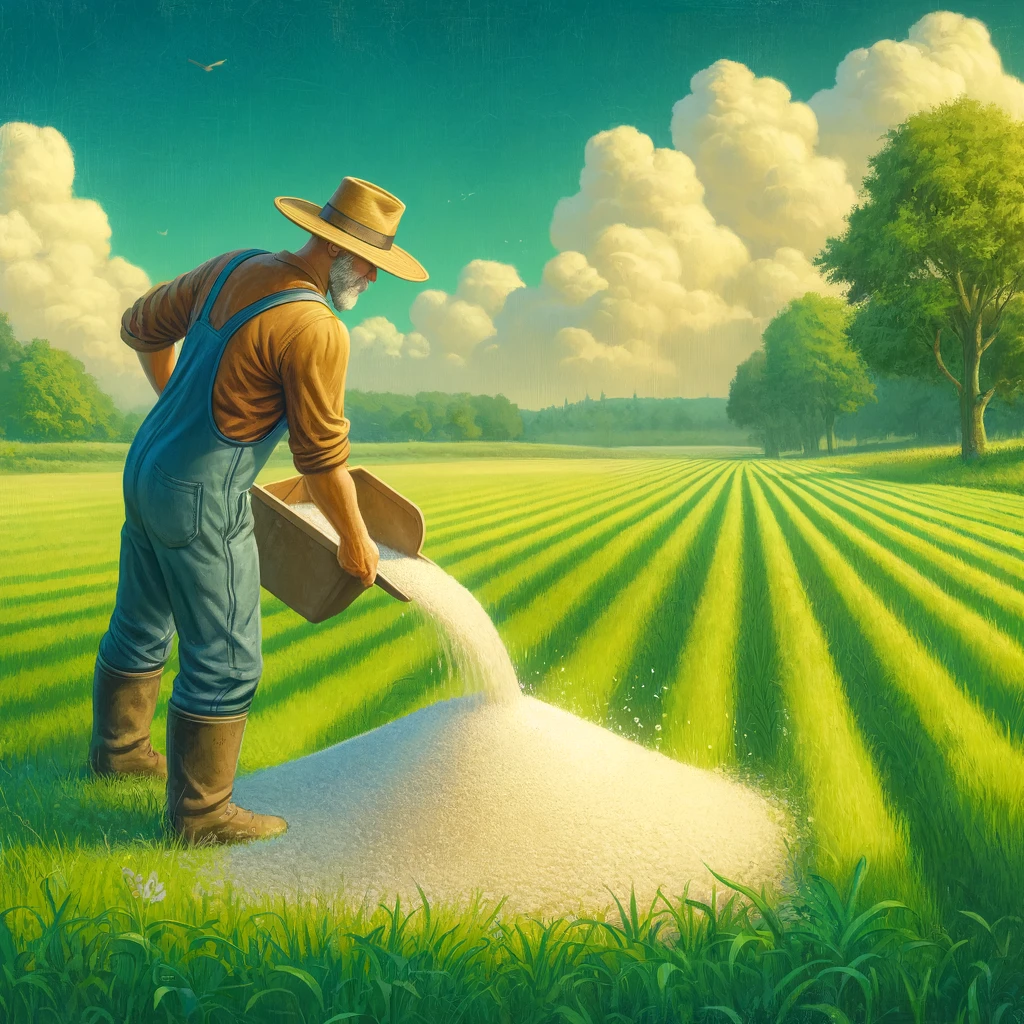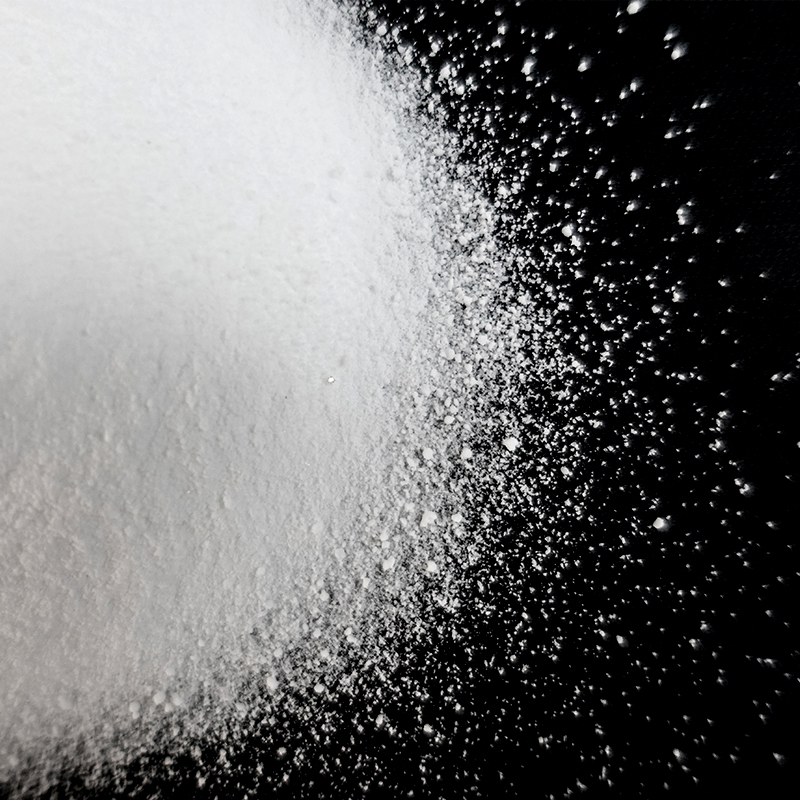Introduction to Potassium in Agriculture
These include the vital nutrient potassium, a powerful support of so many physiological processes that are essential for plants, and of great importance in agriculture – water regulation, enzyme activation and photosynthesis included. Potassium is also an important protection against disease and pests, but moreover an element for enriching the taste and quality of crops.
While ensuring a constant supply of potassium, these organic fertilizers are a sustainable and green option to replace synthetic fertilizers – they provide potassium in a form that can be readily utilised by our crops and promote healthy plant growth. The application of potassium organic fertilizers also improves the health of the soil, as they enhance its structure and the population of microbes living in it – important contributors for crop growth. As a result, using these organic compounds is less likely to contribute to soil degradation or pollute the environment compared with synthetic alternatives.
Later on, we will further analyze the role of potassium in plant nutrition, introduce several different types of potassium organic fertilizer, and provide a detailed reference on reasonable application of such fertilizers to optimise their use in crop management.
The Importance of Potassium in Plant Nutrition
For instance, potassium is among the most important mineral nutrients in plant physiology. The plant needs it in especially high amounts for many physiological processes that are of key importance for plant growth and development. Potassium is required for the uptake of water, which is essential for maintaining turgor pressure in plant cells and for drought resistance in crops. It is required by many enzyme reactions necessary for energy production, as well as for protein and starch synthesis, which play a crucial role for growth.
The presence of sufficient potassium is important for photosynthesis – a plant’s ability to convert sunlight into energy – because it helps to make this process more efficient, which leads to higher energy yields, and can help lead to more robust growth. And since sugar movement is affected by potassium, the presence of this mineral can impact the taste and overall quality of the fruits and vegetables being produced.
So farmers should know early symptoms of potassium deficiency and take measures to avoid adverse effects on quality and yield of the crops. Traditional symptoms are chlorosis and necrosis of leaf edges, weak root system and stunting. Lower potassium can make significant reduction in crop output. Farmers should grow the crops in suitable level of potassium.
Proper management of potassium deficiency could increase both the quality and quantity of produce, and enhance the health and resilience of plants to environmental stress. This section illustrates how proper potassium nutrition could transform crop output and therefore improve agricultural production.

Types of Potassium Organic Fertilizer
Pure K organic fertilizers contain nutrients in organic form, which can be organic potash, organic silicon powder, or organic K ester and so on, and provide more possibilities in sustainable agriculture based on the natural environment making the soil healthier and continuously cultivating crops, given the current high-intensity cultivation patterns and reclamation of unused arable land, a list of advantages and the application of some important organic fertilizers rich in potassium are given below, categorized as NPK fertilizer, SPOM fertilizer, and organic K fertilizer respectively:
Sulfate of Potash (SOP): This is basically pure potassium in a Soluble form that plants can access extremely efficiently, providing a perfect complement to nitrogen. It is especially useful in soils with low pH (acidity), where it supplies the most missing macronutrient and helps restore the nutritional balance with acid-loving anions (eg sulphate and chloride), which promotes greater drought and cold resilience.
Greensand: Greensand is an organic fertilizer derived from mineral deposits that contains potassium and other trace minerals, making it a slow-release feed that’s best applied as a long-term nutrient provision. Greensand is also known to help loosen clay soils, and increase water retention in sandy soils.
Kelp Meal Dried seaweed gives rise to kelp meal, a potassium-rich, mineral-filled fertilizer that not only invigorates plants but also stimulates microbial activity in the soil in order to improve fertility. Because kelp is also known to have growth hormones, it is especially cherished in organic methods. These hormones promote rooting and resistance to disease in plants.
These several types of potassium organic fertilizer are suitable for the various types of soil toughness and crops in order to ensure the best effect and reduce costs.
Best Practices for Applying Potassium Organic Fertilizer
Applying potassium organic fertilizer in an effective manner is very important to ensure the maximal effect of these fertilizers with respect to crop production also if can become a health problem. In the following we will provided some instructions to help apply these fertilizers effectively for all types of crops.
Soil Testing: Before any fertilizer is applied, conduct a soil test to see what the current level of potash and other nutrients in the soil are. Then you know how to add fertilizer to suit the needs of the crops.
Time of Application : :When to apply potassium can be very influential to plant development, especially in fruiting plants.Most crops benefit earlier in their season from potassium applied, that is, in the beginning of each growing season. For fruiting plants, additional potassium mighat benefit the plant later in fruiting development, such as fruit quality development.
Method of Application: The potassium organic fertilizer can be either mixed directly with the soil or applied through the leaves. Soil application is more common. It is good to spread the material on the area evenly, so that the substances are absorbed evenly. Foliar application can be used if the absorption process is quicker needed, such as due to visible potassium deficiency symptoms.
Dose: According to the soil test result, crop type and growth stage, it is important to correctly apply the appropriate dose. If the dose is over-applied, it may lead to a disturbed ratio of nutrients and cause ecological problems; if under-applied, it cannot sufficiently replenish the nutrients.
Crop rotation integration:With the oriental bay rotating with crops that can provide potassium as an organic fertilizer, the soil can build its nutrient pool for potassium over time, maintaining the good balance of the nutrients and nutrient condition. The microorganisms in the soil play an important role in potassium nutrient acquisition. As long as there are sufficient microorganisms in the soil, the farmland can acquire potassium. If there aren’t enough, the farmland’s ability to acquire potassium will be weakened. Diseases can build up when there is a lack of potassium. Crop rotation can also regulate disease conditions. Good soil structure and healthy soil is another benefit of a well-constructed crop rotation.
If farmers adhered to this best practice in more widespread fashion, potassium organic fertilizers would be taken up well by plants and contribute to healthier crops and higher yields.
Integrating Potassium Organic Fertilizer into a Crop Management Plan
Planting Brassicas is extremely important and effective tool for improving soil for nitrogen fixation. Potassium organic fertilizer cannot be applied simply. It should be combined with a balanced nutrient management plan. In order to realize the best growth of plants and soil improvement, you’d better pay attention to the following points. Strategies According to the principle of sustainable management of farmland, adding potassium just cannot solve the problem of nutrition, it should be combined with the management of other nutrients.
Balancing Potassium is only one part of the story: Potassium shouldn’t be applied on its own. I’m thinking here of the balancing of all nutrients, especially nitrogen and phosphorus. Balanced nutrient management provides plants with all the nutrients they need at the right proportions, which promotes more balanced growth, reduces disease incidence and gives caregivers a better understanding of the needs of their plants.
Crop-Specific Requirements Not all crops have equal nutrient requirements. The potassium requirements of heterogeneous crops might very well differ. For example, potassium content requirements in root crops are always higher than that in leafy vegetables. The best approach here is to have variable potassium input for each crop type rather than collectively feeding all plants with the same dose of potassium, in the hope that all plants equally benefit from the nutrient input.
Continual monitoring and adjustment: Once a fertilizer programme is in place, knowing how the crop is developing allows for adjustments in fertilizer application according to changes in crop needs or unexpected uptake or loss of soil-applied nutrients. The optimal strategy is to know what a plant needs at any given time (and in what form) and adjust inputs to these needs. Leaf tissue analysis can offer the most reliable monitoring to fine-tune nutrient management.
Organic mulches: Apply organic mulches like straw, wood chips or compost to increase biological activity in the soil and improve potassium status. As these amendments break down, they slowly add potassium and other nutrients back to the soil, contributing to long-term nutrient availability.
Sustainable Practices: Reducing tillage and applying cover crops, among other sustainable ag practices, maintain or increase soil K while preserving soil structure and reducing erosion, which will increase the biology needed for natural nutrient cycling in the soil.
Upon integration of these strategies in a crop management plan, potassium organic fertilizers can be economically utilised to enhance productivity of crop, maintain soil health and produce an environmentally stable crop.

Case Studies and Success Stories
Evidence in many agricultural fields has shown that use of potassium organic fertilizer is able to improve crops’ health and yield. Here is a few examples and experience share about it:
Tomato Farming in California
A group of organic tomato farmers in California reported that they saw improved quality and vigour in the plants after switching from synthetic sources such as muriatic potash to the sulfate, or SOP, of potash. SOP not only increased yields but also improved the taste and shelf-life of the tomatoes, important factors that boosted their competitiveness in the organic market.
Coffee Plantations in Brazil
Kelp meal is used in potassium supplementation across fertilisation programmes for coffee growers in Brazil. Farmers noticed that coffee plants fertilised with kelp meal were producing larger beans with more complex flavours, and that they could better withstand drought and heat waves.
Testimonial from a Crop Nutrition Expert
Hannah Mason, an agronomist who studied sustainable agriculture for her PhD, recommends greensand to farmers and gardeners, saying it provides ‘a slow-release source of potassium and can help to correct micronutrient deficiencies that are typically not considered when growing crops with artificial fertilizers’.
Potato Yield in Idaho
In a recent experiment in Idaho, potato crops were cultivated with either synthetic potassium chloride or with organic potash. The potatoes grown with organic potash had 40 to 50 per cent higher levels of antioxidants and nutrients, and the soil showed better microbial activity, which is important for absorption of nutrients and growth of roots.
These examples show clearly the kind of change brought about by potassium organic fertilizer to crops and various environments. They demonstrate the importance of a sustainable agriculture to obtain higher yields and higher quality produce, maintaining healthiness to the soil and controlling the balance of the ecology.
Conclusion
The use of potassium organic fertilizer in agriculture was a key move towards a better cultivation process by promoting a healthy crop, boosting yield and sustainable farming.
Organic potassium inputs such as sulfate of potash, greensand, and kelp meal have been demonstrated to enhance crop flavour and texture, and to improve nutritional content. Higher yields are also a typical result of using these sources, especially in organic farming systems where soil health is a key factor.These inputs further enhance soil fertility, not solely through the provision of essential plant nutrients, but as a catalyst for soil microbial activity that builds soil structure and bolsters nutrient cycling, which are fundamental to long-term agricultural production.
Organic potassium, on the other hand, can reduce pollution of soil and water and degrade naturally, minimising their footprint on the environment and supporting the balance of the ecosystem.
Potassium organic fertilizers will be more important as the world moves the activity on the potassium axis of the Positive K Image towards increased sustainability. Both farmers and growers are encouraged to move to or increase the use of these organic fertilizers. In addition to providing a direct benefit to crop production, inputs on the potassium axis contribute an indirect benefit of providing an interface to contribute to the goals of environmental sustainability and ecological health.
The use of potassium organic fertilizers in crop management plans is a contribution of the agricultural community to move towards a more sustainable and productive agriculture, both now and for the future.
Here are three scholarly articles on potassium organic fertilizer that might be helpful for your research:
- Long-term organic fertilizer additions elevate soil extracellular enzyme activities and tobacco quality – This study, published in Frontiers, explores the effects of long-term organic fertilizer use on soil enzyme activities and tobacco crop quality. It particularly focuses on the microbial and enzymatic aspects of soil health under different organic fertilizer treatments.
- Optimum Nitrogen, Phosphorous, and Potassium Fertilizer Application Increased Chrysanthemum Growth and Quality – Published by MDPI Plants, this article examines how the application of N, P, and K fertilizers influences the growth of Chrysanthemum by affecting the soil microbial community and nutrient cycling. The study highlights the importance of balanced macronutrient application in improving both plant growth and soil health.
- Banana peel biochar as an alternative source of potassium for plant nutrition – This innovative study discussed in Springer Link investigates the potential of banana peel biochar as a potassium source. It examines its effects on soil fertility and plant nutrition, providing a sustainable alternative to traditional potassium fertilizers. This approach not only recycles organic waste but also enhances soil nutrient profiles.







